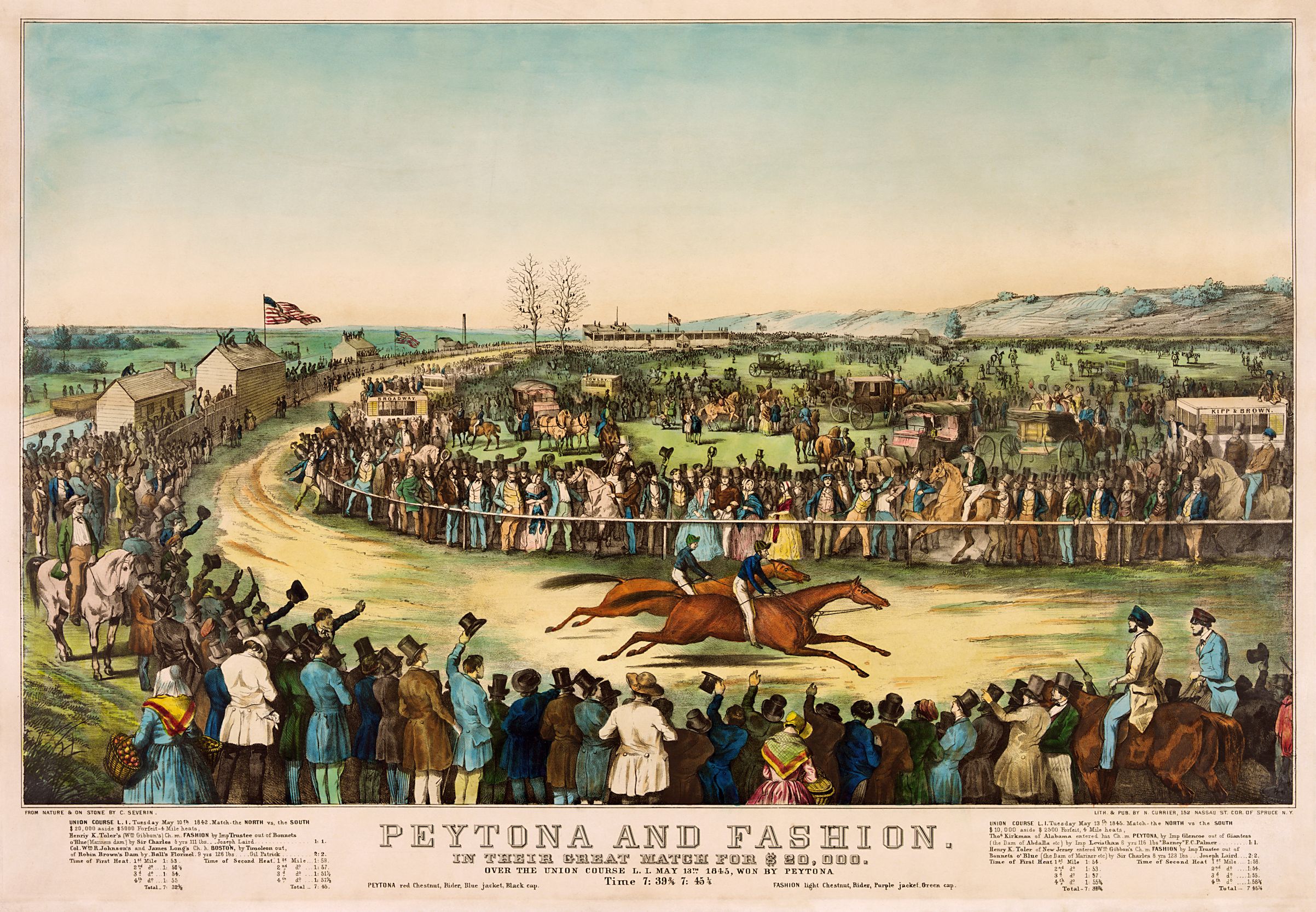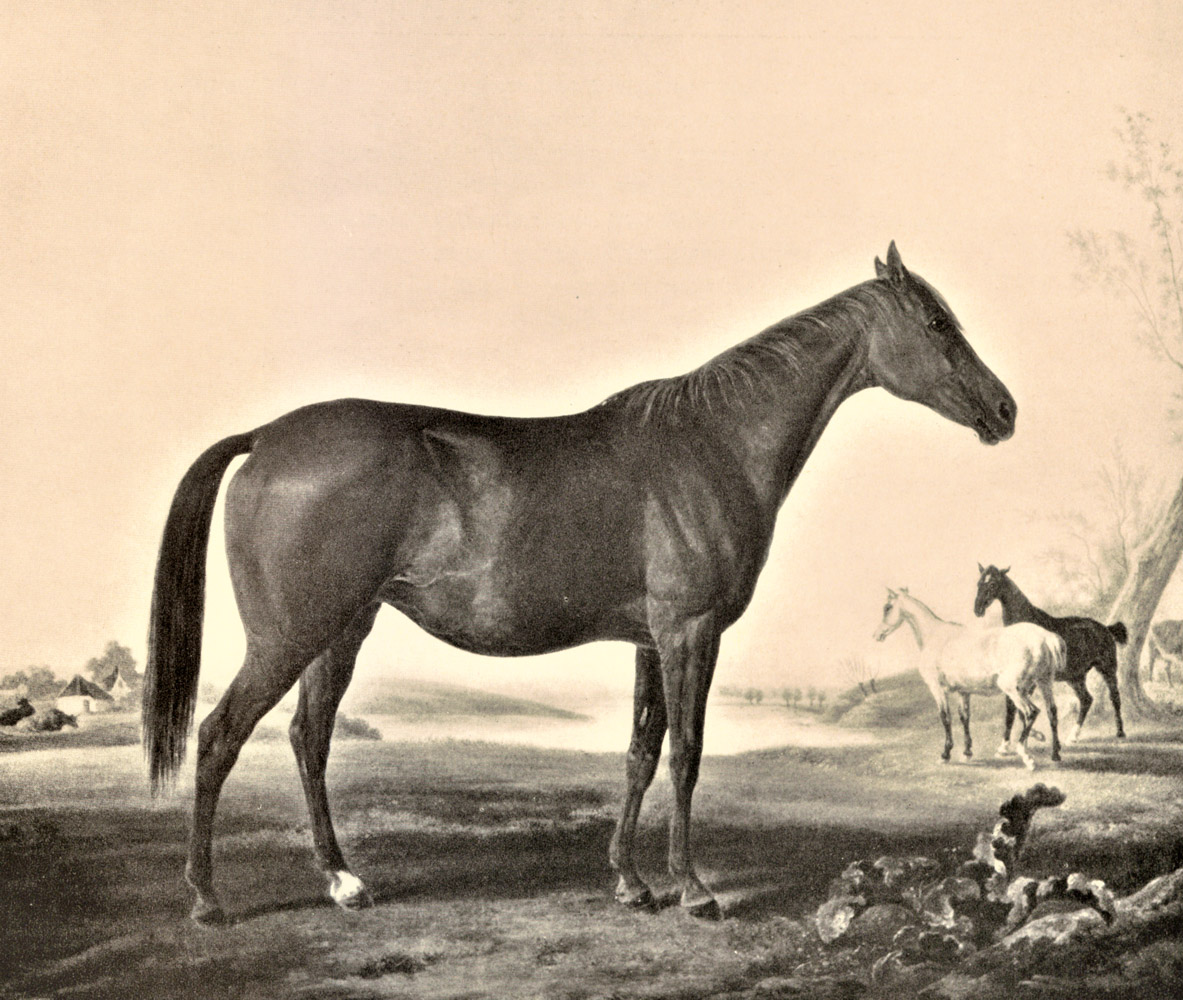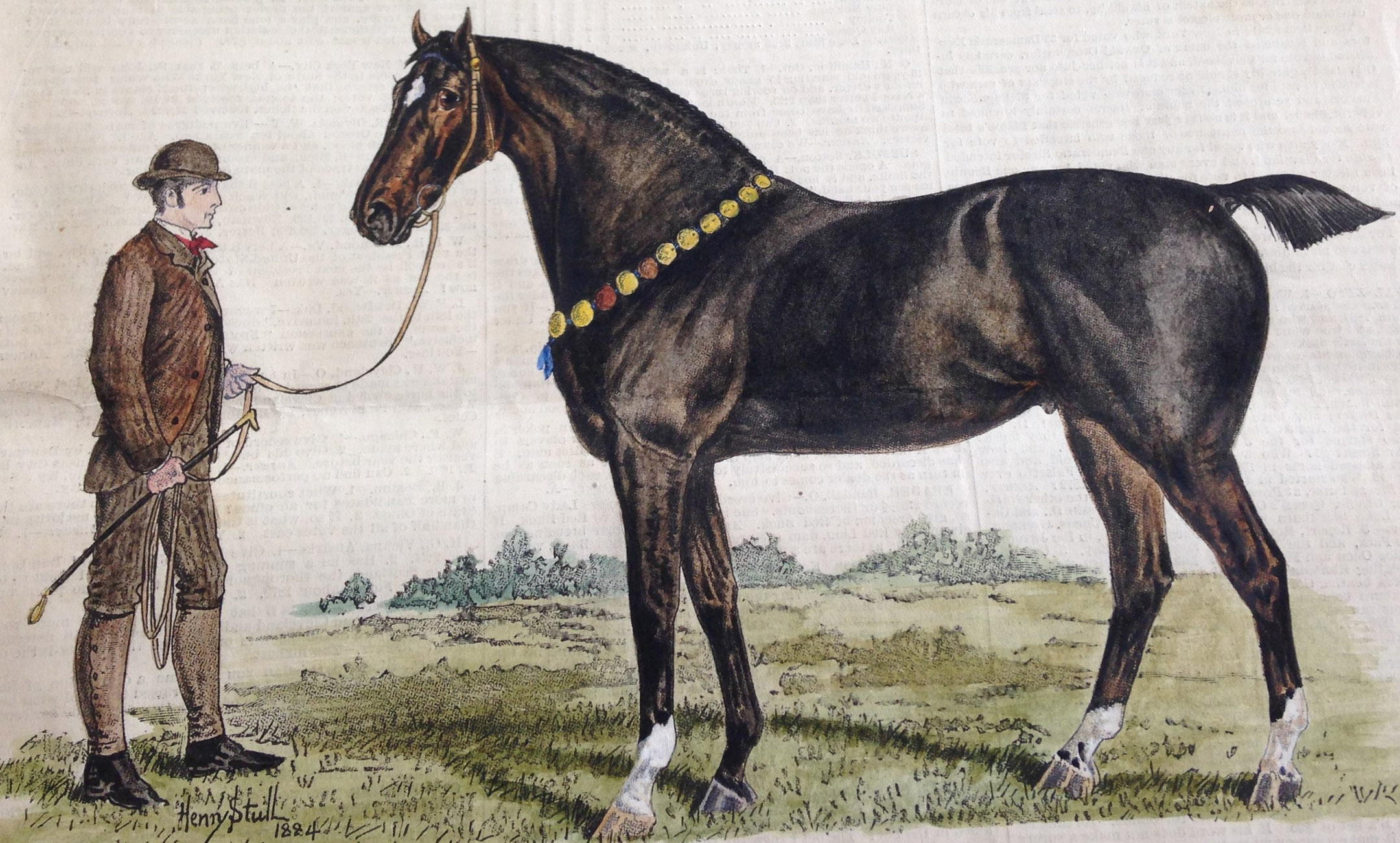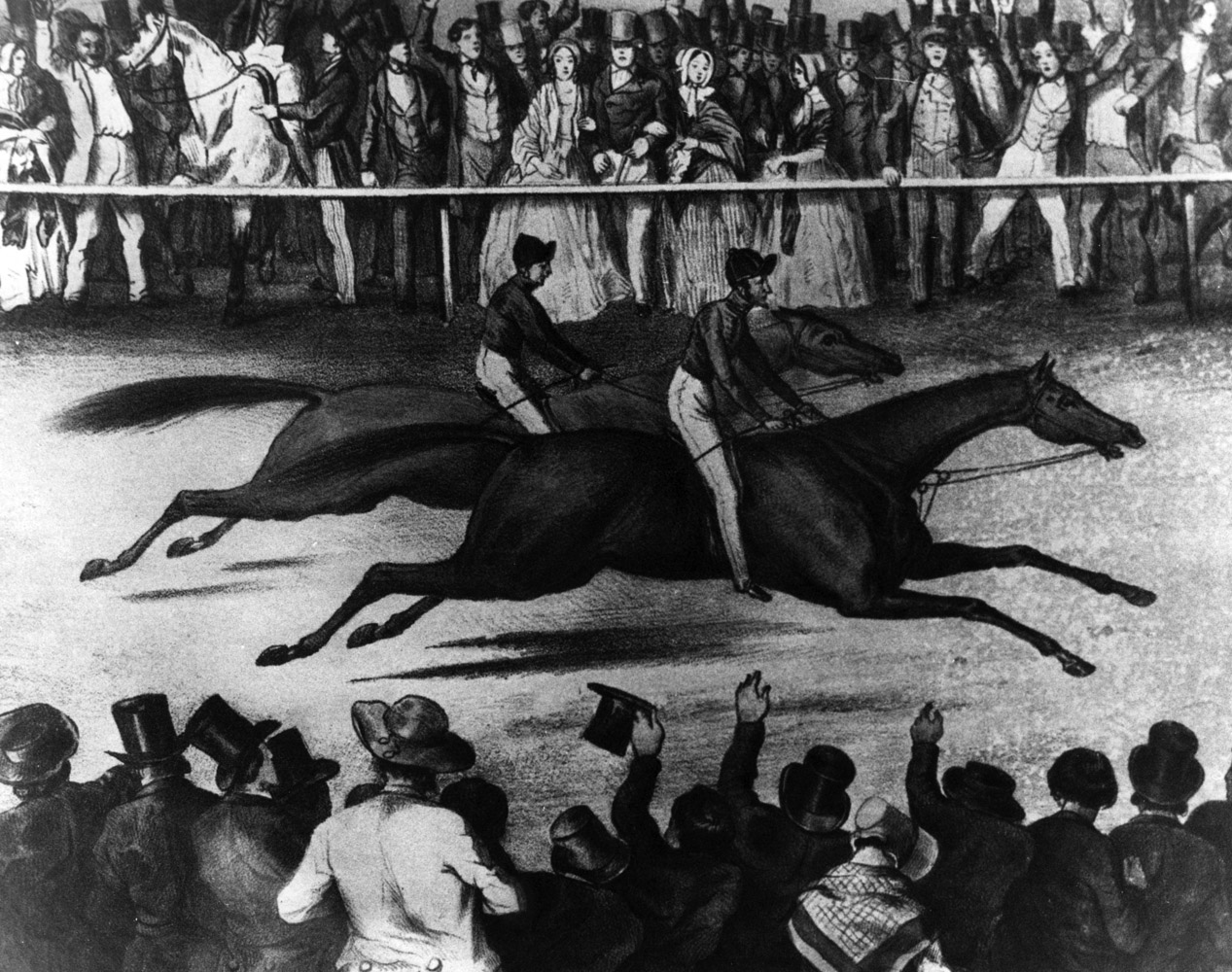Fashion (NJ)
Described by historian John Hervey as “the greatest race mare ever produced in America," Fashion was the undisputed Queen of the Turf in the 1840s.
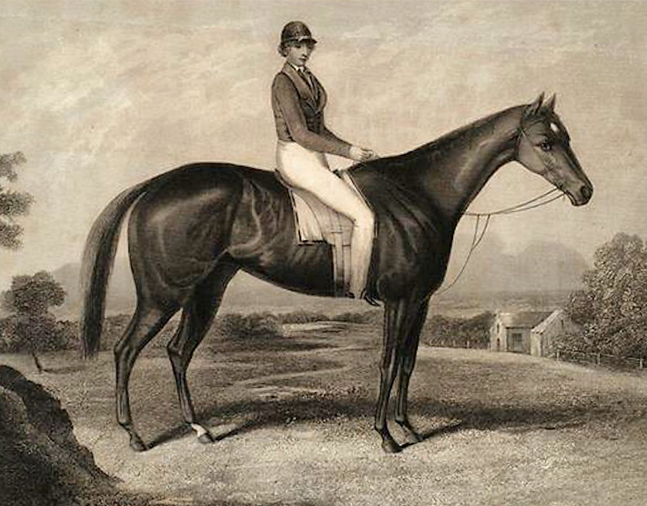
1980
1837
Trustee
Bonnets o' Blue
Sir Charles
William Gibbons
William Gibbons
Samuel Laird
1840-1848
$41,500
Racing Record
36
Starts
| 1840 | 2 | 2 | 0 | 0 | $1900 $1,900 |
| 1841 | 5 | 4 | 1 | 0 | $1900 $1,900 |
| 1842 | 4 | 4 | 0 | 0 | $23800 $23,800 |
| 1843 | 7 | 7 | 0 | 0 | $4800 $4,800 |
| 1844 | 6 | 6 | 0 | 0 | $3200 $3,200 |
| 1845 | 4 | 3 | 1 | 0 | $2100 $2,100 |
| 1846 | 3 | 3 | 0 | 0 | $1700 $1,700 |
| 1847 | 2 | 1 | 1 | 0 | $400 $400 |
| 1848 | 3 | 2 | 1 | 0 | $1700 $1,700 |
Biography
Described by historian John Hervey as “the greatest race mare ever produced in America," Fashion was the undisputed Queen of the Turf in the 1840s.
A chestnut filly by Trustee out of the Sir Charles mare Bonnets o’ Blue, Fashion was bred in New Jersey by owner/breeder William Gibbons and trained by Samuel Laird.
Fashion made her career debut as a 3-year-old in October 1840 at Camden, New Jersey, winning easily in straight two-mile heats. Six days later, at Trenton, New Jersey, she again won in straight two-mile heats, defeating Fleetfoot, at the time considered one of the best fillies ever bred on Long Island.
In the spring of 1841, Fashion had her first race over the Union Course on Long Island, winning in straight three-mile heats. She suffered a rare defeat 12 days later at Camden when she finished second to Tyler. Fashion, however, quickly regained her form and began defeating the best horses of her day. In October 1841, Fashion defeated the talented John Blount, regarded as the best colt in Virginia.
Seven days after defeating John Blount, Fashion contested the Jockey Club Purse, a race open to all ages to be run in four-mile heats. John Blount was given another chance and the race also drew Col. William Ransom Johnson’s Hall of Famer Boston. Fashion’s jockey, Joe Laird, was given instructions not to press his mount in the first heat, which was won by John Blount. In the second heat, Fashion won by three lengths in 7:48, a second faster than any second heat ever run by Boston. John Blount came back lame and Fashion was named the winner. Boston did not contest the second heat after being ruled ineligible because he was “distanced” in the first heat.
Boston’s poor showing was shocking, prompting Col. Johnson to offer a match race at $20,000 a side, with a $5,000 forfeit, to be run in four-mile heats. Gibbons accepted and the match was set for May 10, 1842, at the Union Course. Nine-year-old Boston carried 126 pounds, while the 5-year-old Fashion carried 111. In the first heat, Fashion hit the wire a length ahead of Boston in 7:32½, besting the world record for a four-mile heat by 2½ seconds. Fashion won the second heat by about 60 yards; Boston was pulled up. An estimated 70,000 people were on hand for the contest, including more than 40 United States Senators and Congressmen making the trip from Washington, D.C.
Fashion continued to dominate, stretching her win streak to 20, which was finally snapped in an 1845 match race against the mare Peytona. Fashion raced successfully through the age of 11. She was retired with a record of 32-4-0 from 36 starts and earnings of $41,500. In her specialty, the four-mile heat, she was a remarkable 34-8. In her final season in 1848, Fashion defeated Bostona, a daughter of her old rival Boston.
In retirement, Fashion produced seven foals in nine years. She died at the age of 23 in 1860 while foaling a filly by Bonnie Scotland.
Media
